types of wine glasses: a complete guide
At Renarte, we understand that every detail on the table shapes the guest experience—including glassware. Selecting the right wine glass enhances the aroma, flavor, and overall presentation of each pour. This guide is designed to help hospitality professionals choose the ideal wine glasses for their venue’s wine list, service style, and guest expectations.
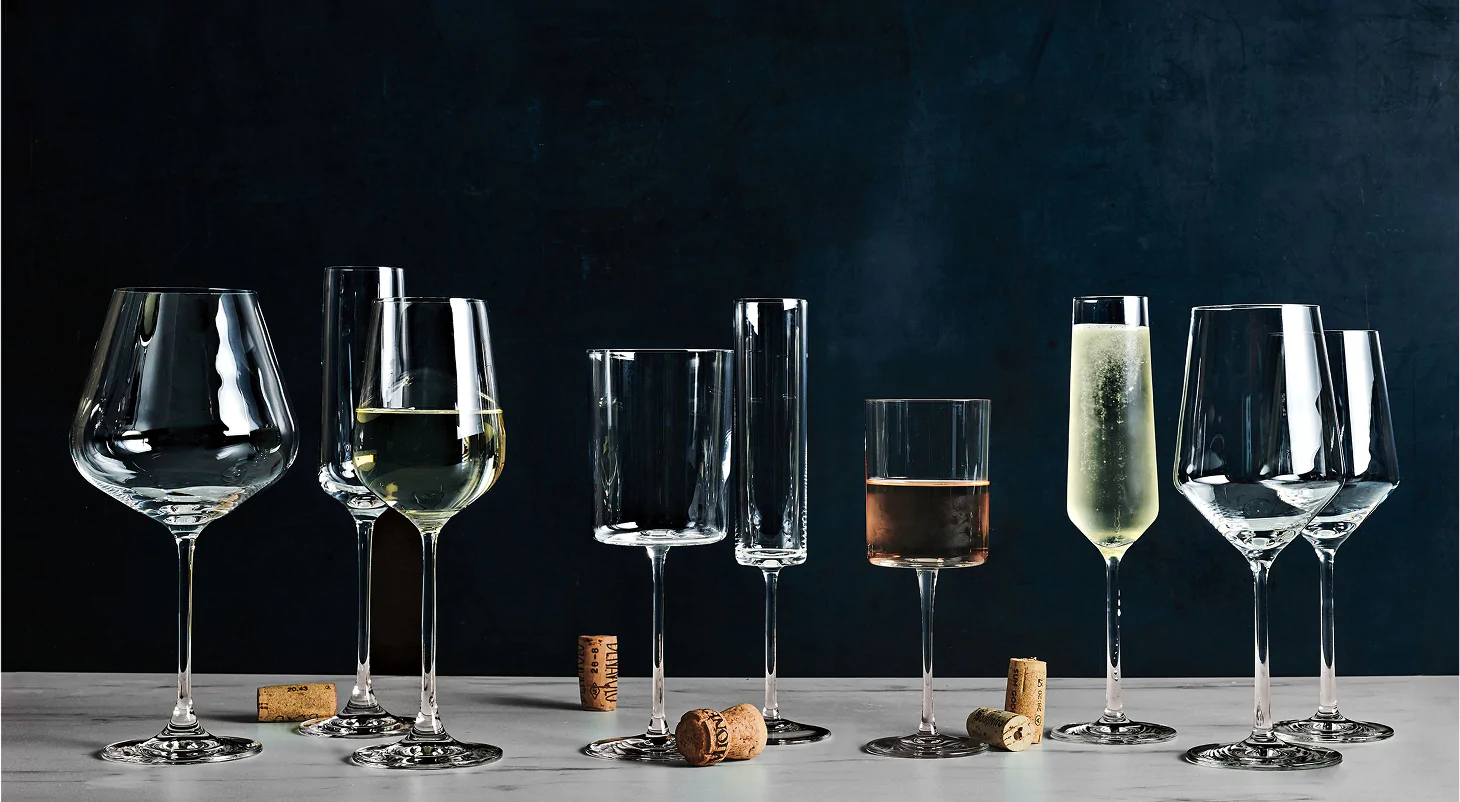
types of red wine glasses
Each wine glass shape is designed to enhance different varietals. When stocking your glassware collection, keep in mind the wines you enjoy most. If you prefer the rich flavor of reds, consider investing in a few different types of red wine glasses to maximize your tasting experience. Use the wine glass guide below to learn about the many distinct wine glass types and which glasses go with which varietals.

Wine Glasses
Cabernet Glass
A tall bowl with a broad base, this is the go-to red wine glass for many venues. Its shape allows full-bodied reds like Cabernet Sauvignon, Syrah, and Malbec to breathe. The wide bowl maximizes surface area for oxidation, softening tannins and enhancing aroma. In hospitality settings, this is a reliable all-rounder for most red pours.
Burgundy Glass
Featuring a fish bowl shape this glass traps the aromas of the full-bodied wine while balancing the wine’s intensity. The narrow rim of the glass alleviates the acidity of the wine by directing it to the center of the palate.
Bordeaux Glass
Taller and more structured than Burgundy glasses, Bordeaux glasses are made for robust reds with high tannins. The shape reduces bitterness and helps deliver wine to the back of the palate. Its elegant height also makes it popular in formal dining settings.
Zinfandel Glass
With a slightly smaller bowl and narrower rim, this glass is great for medium-bodied reds with higher alcohol content. It tempers the aroma of ethanol while lifting fruit-forwarD characteristics. Commonly used for Zinfandel, Grenache, or even bold rosés in modern dining rooms.
Pinot Noir Glass
Similar to a Burgundy glass but with more taper at the rim, this glass enhances aroma and directs the wine to the front of the mouth. It helps express red fruit and floral notes while softening acidity. Ideal for wine-centric restaurants where the glass matters as much as the pour.
Sauvignon Blanc Glass
These glasses have a narrow bowl and opening that does not compromise the bright flavour profiles of the white wine. The wine is directed to the center of the tongue to enhance flavours and reduce acidity.
Chardonnay Glass
Featuring a large bowl to balance out oaky notes, a larger area of the wine is exposed to air, opening up more flavours. The wide opening evenly spreads the wine across the palate for conveying complex flavours.
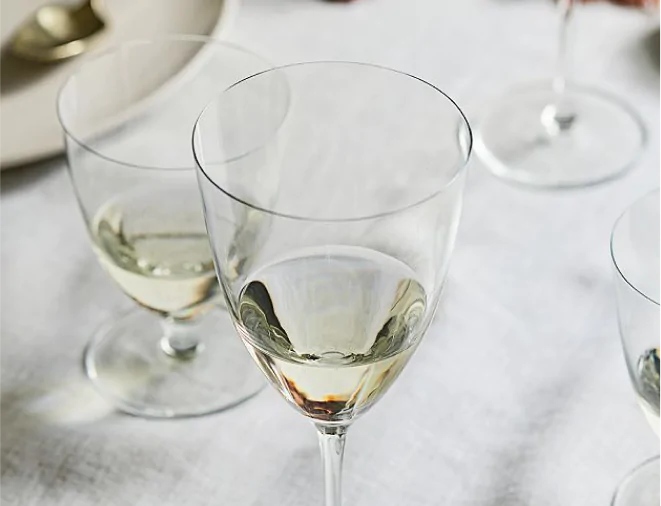
types of white wine glasses
SAUVIGNON BLANC GLASSES
These glasses have a narrow bowl and opening that does not compromise the bright flavour profiles of the white wine. The wine is directed to the center of the tongue to enhance flavours and reduce acidity.
CHARDONNAY GLASSES
Featuring a large bowl to balance out oaky notes, a larger area of the wine is exposed to air, opening up more flavours. The wide opening evenly spreads the wine across the palate for conveying complex flavours.
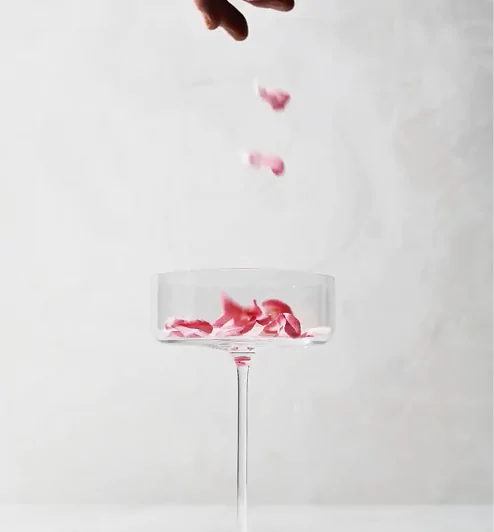
sparkling wine & champagne glasses
CHAMPAGNE FLUTES
To maintain the bubbles in sparkling wine or champagne, these glasses feature a narrow bowl with a smaller mouth. This unique shape preserves the fizz by limiting oxidation and keeping the wine cool. To keep it chilled for longer times, consider using a wine bucket.
TULIP GLASS
These tulip shaped glasses with slimmer bases and a wider bowl that narrows before opening, this shape retains the fizz while guiding the wine and the aromas to the tongue.
COUPE GLASSES
With shallow bowls, longer stems and wide mouths, these glasses are also used for martinis and manhattans. They open the flavour profiles for a full-bodied taste and fewer bubbles.

Dessert Wine Glasses
PORT GLASSES
These glasses are smaller in size as a smaller pour is served, as port wines are more alcoholic. The small stature of the glass allows your body heat to release aromas in the wine.
SHERRY GLASSES
Looking like a miniature white wine glass, the smaller bowls and narrow mouths trap complex aromas of the sherry. The long stem prevents body temperature to raise the temperature of the wine.
Rose Wine Glasses
Young Rosé Glass
Glasses used to serve young rosé wine have a flared mouth that draws the crisp flavours of the wine and focuses it to the tip of the tongue.
Mature Rosé Glass
Mature rosé is served in a slightly tapering glass with small rounded bowls and long stems, for pushing the aromas to the top.
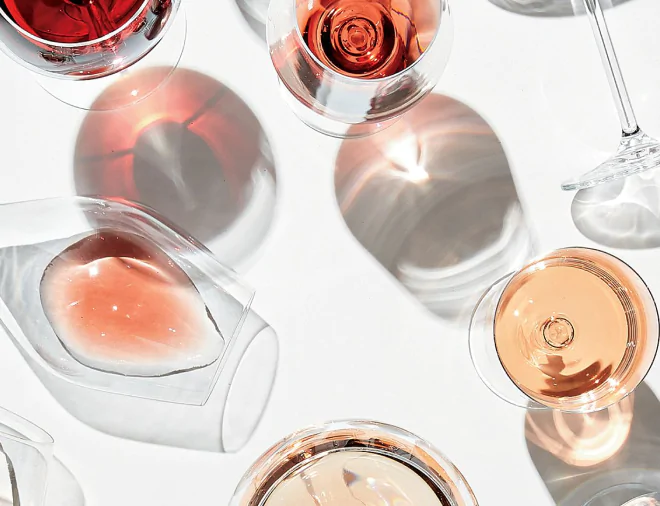
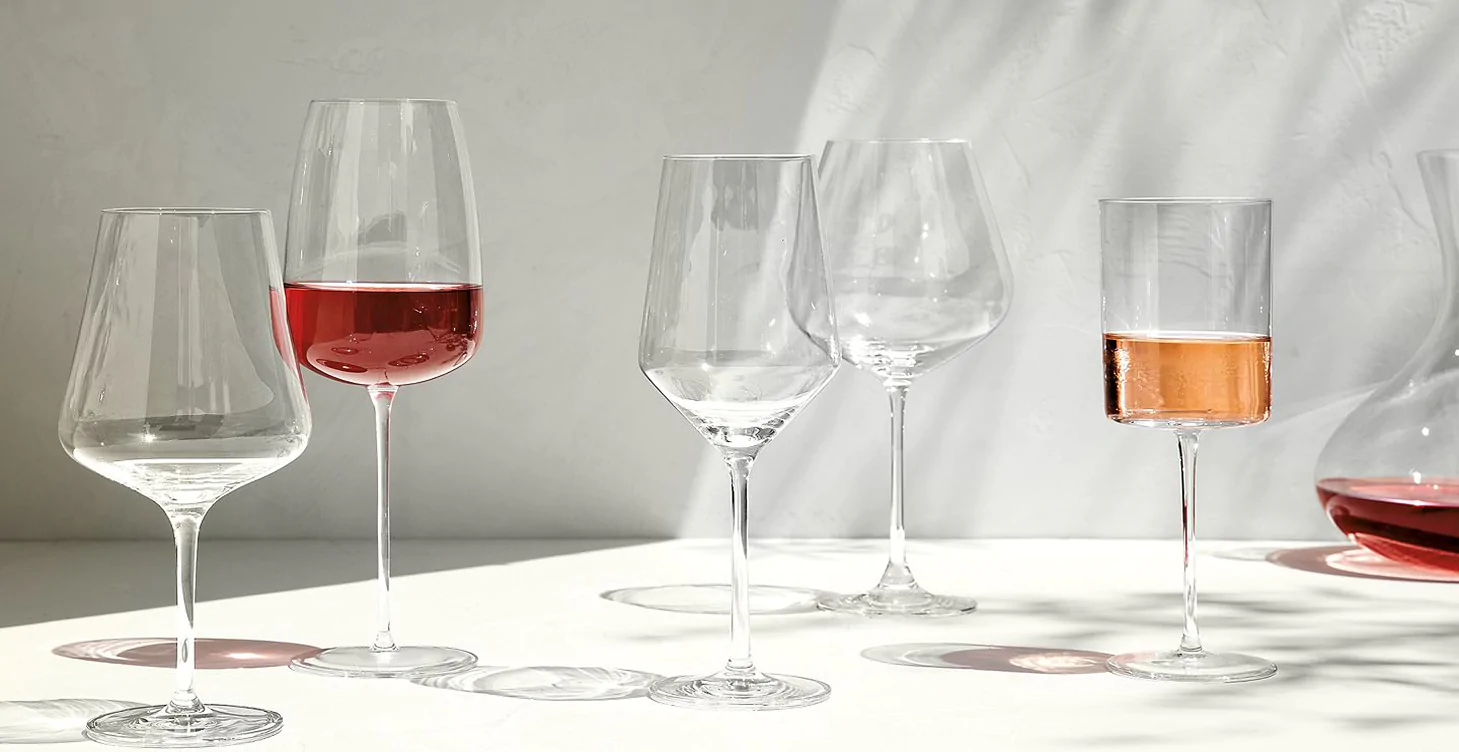
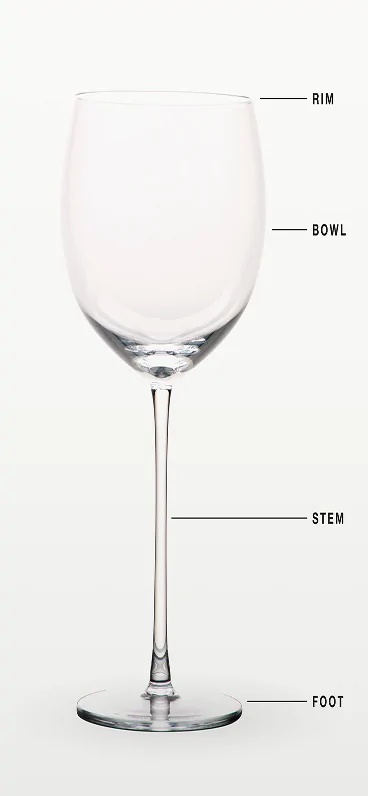
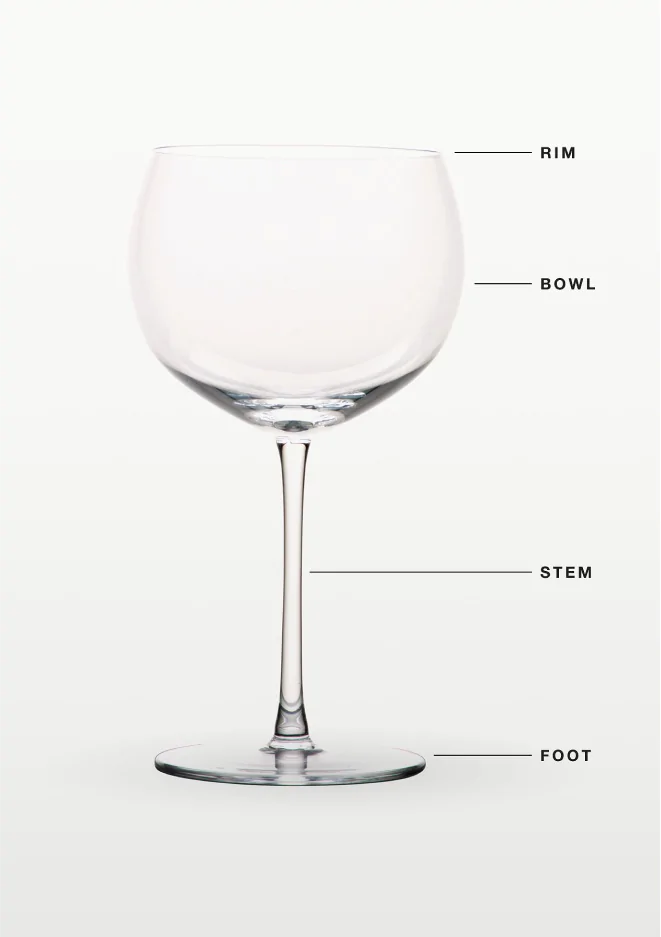
types of red wine glasses
Wine glasses are designed to elevate the drinking experience and every part from top to bottom—from rim to base—each part plays a role in enhancing aroma, flavor, and the overall wine experience.
FOOT
The foot or the base of the glass keeps it balanced. Modern wine glasses feature a thick layer of glass beneath the bowl (sham) to give a sturdy foundation & sculpted silhouette.
STEM
The stem is the slender piece of glass that connects the bowl and the base. It is recommended to hold long stem wine glasses close to the base, keeping body heat away & allowing you to drink at the perfect temperature while keeping distance between your hand & nose.
BOWL
The shape and size of the bowl affects the aromas that are released and collected. For getting a proper swirl, pour the wine to roughly one-third of the bowl and swirl. This releases its aromas before sipping.
RIM
The rim size and shape is ideal to direct the wine to the right area of the palate, highlighting or reducing specific notes and acidity. Thinner rims are ideal for best tasting experiences as the wine can transition swiftly from the glass to your tongue.

